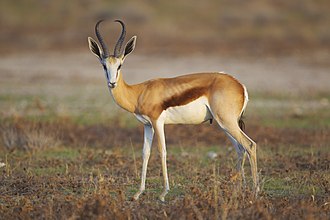Event research South Africa v Japan
South Africa v Japan tickets are on sale right now.
Are South Africa v Japan tickets likely to be profitable in London?
There is 1 presale for this event - we have 1 unique password for this presale.
Ai Ticket Reselling Prediction
Sign Up to get artificial intelligence powered ticket reselling predictions!
Using artificial intelligence, concert attendance stats, and completed sales history for ticket prices on secondary market sites like Stubhub, we can predict whether this event is hot for resale. The Ai also considers factors like what music genre, and what market the concert is in.
Shazam is a music app that helps you identify the music playing around you. The more times an artist gets Shazamed, the higher this score will be, which should give you an idea of the popularity of this artist. Scores are ranked on a scale of 1 to 5. Learn more
Google Trends shows how popular a search query is for an artist. The more popular the artist is and the more people that are Googling them, the higher this score will be. Scores are ranked on a scale of 1 to 5. Learn more
90,000
Capacity
South Africa v Japan at the Wembley Stadium, London
Tour Schedule
South Africa v Japan
12 similar events found
Watch on YouTube
Listen on iTunes
Wikipedia Bio
| Springbok | |
|---|---|

| |
| Male at Etosha National Park | |
| Scientific classification | |
| Kingdom: | Animalia |
| Phylum: | Chordata |
| Class: | Mammalia |
| Order: | Artiodactyla |
| Family: | Bovidae |
| Subfamily: | Antilopinae |
| Tribe: | Antilopini |
| Genus: | Antidorcas |
| Species: | A. marsupialis
|
| Binomial name | |
| Antidorcas marsupialis (Zimmermann, 1780)
| |
| Subspecies | |
| |

| |
native range
| |
| Synonyms[2] | |
|
List
| |
The springbok or springbuck (Antidorcas marsupialis) is an antelope found mainly in south and southwest Africa. The sole living member of the genus Antidorcas, this bovid was first described by the German zoologist Eberhard August Wilhelm von Zimmermann in 1780. Three subspecies are identified. A slender, long-legged antelope, the springbok reaches 71 to 86 cm (28 to 34 in) at the shoulder and weighs between 27 and 42 kg (60 and 93 lb). Both sexes have a pair of black, 35-to-50 cm (14-to-20 in) long horns that curve backwards. The springbok is characterised by a white face, a dark stripe running from the eyes to the mouth, a light brown coat marked by a reddish-brown stripe that runs from the upper foreleg to the buttocks across the flanks like the Thomson's gazelle, and a white rump flap.
Active mainly at dawn and dusk, springbok form harems (mixed-sex herds). In earlier times, springbok of the Kalahari Desert and Karoo migrated in large numbers across the countryside, a practice known as trekbokking. A feature, peculiar but not unique, to the springbok is pronking, in which the springbok performs multiple leaps into the air, up to 2 m (6.6 ft) above the ground, in a stiff-legged posture, with the back bowed and the white flap lifted. Primarily a browser, the springbok feeds on shrubs and succulents; this antelope can live without drinking water for years, meeting its requirements through eating succulent vegetation. Breeding takes place year-round, and peaks in the rainy season, when forage is most abundant. A single calf is born after a five- to six-month-long pregnancy; weaning occurs at nearly six months of age, and the calf leaves its mother a few months later.
Springbok inhabit the dry areas of south and southwestern Africa. The International Union for Conservation of Nature and Natural Resources classifies the springbok as a least concern species. No major threats to the long-term survival of the species are known; the springbok is one of the few antelope species considered to have an expanding population. They are popular game animals, and are valued for their meat and skin. The springbok is the national animal of South Africa.
- ^ IUCN SSC Antelope Specialist Group. (2017) [errata version of 2016 assessment]. "Antidorcas marsupialis". IUCN Red List of Threatened Species. 2016: e.T1676A115056763. doi:10.2305/IUCN.UK.2016-3.RLTS.T1676A50181753.en. Retrieved 7 August 2025.
- ^ Cite error: The named reference
Cain2004was invoked but never defined (see the help page).
Source: Wikipedia


